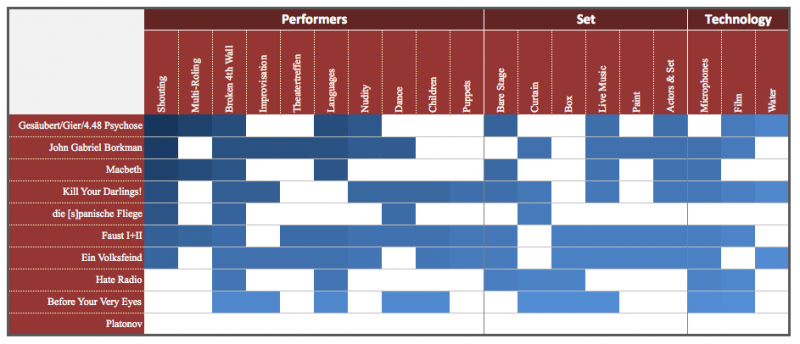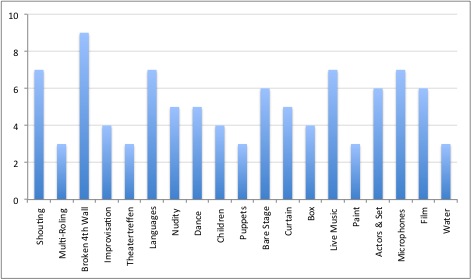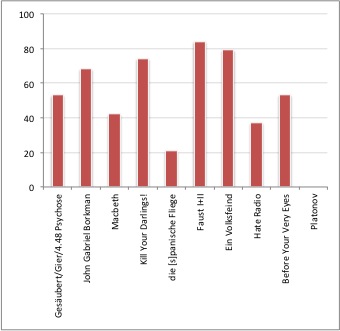We knew from the start that all ten of the productions invited to Theatertreffen were in some way „remarkable,“ that they had something that made them stand out in the crowd of 700 performances the jury attended over the year. But, looking back over the festival, what did the productions have in common? Here are some statistics:
Performers
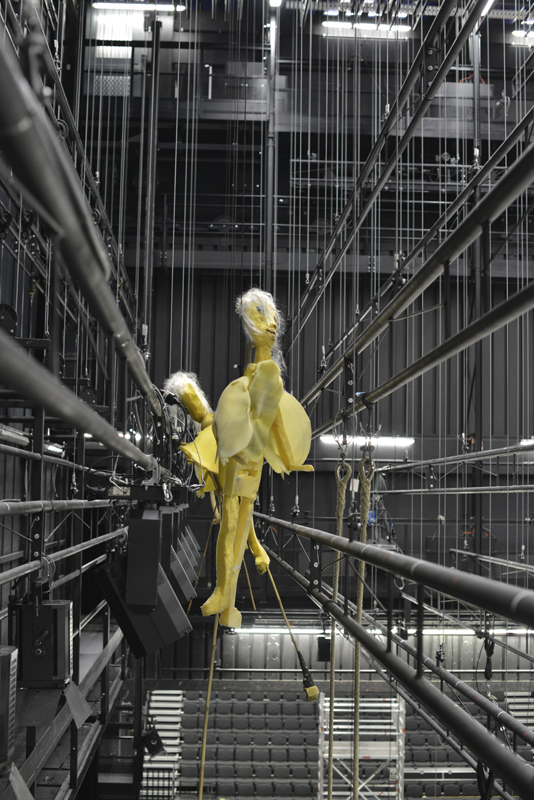
Puppets backstage at "Faust I+II", Photo: Nadine Loës
7/10 productions had actors shouting lines that do not logically require to be shouted
3/10 had actors performing more than one role (multi-roling)
9/10 addressed the audience directly (broken 4th wall)
4/10 didn’t stick to the script, opting for moments of improvisation
3/10 directly and deliberately referenced the Theatertreffen festival
7/10 had lines performed in two or more languages
5/10 featured some form of nudity, ranging from bare bums to full-frontal.
5/10 included either dance routines or gymnastics
4/10 had real live children
3/10 used either puppets or animal costumes
Set
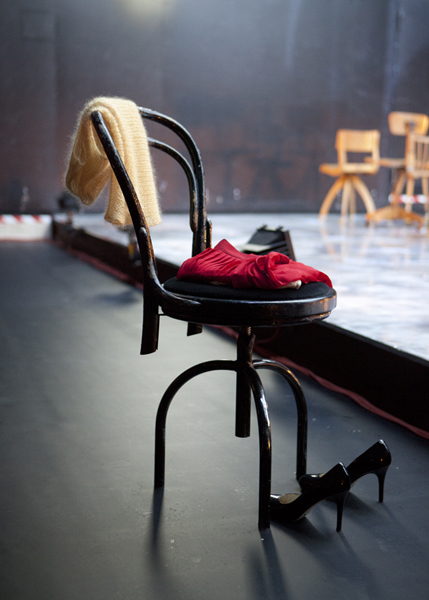
Apart from chairs, the stage for "Gesäubert/Gier/4.48 Psychose" was bare, Photo: Nadine Loës
6/10 had a bare stage, leaving the original depth and sides of the stage exposed
5/10 made the curtain a feature of the set, often projecting onto it
4/10 built a closed box on stage
7/10 featured live music on stage, whether a drumkit, a classical ensemble, or singing
3/10 attacked their set with paint during the performance
6/10 had actors moving or changing the set, unhidden by a curtain or blackout (actors & set)
Technology
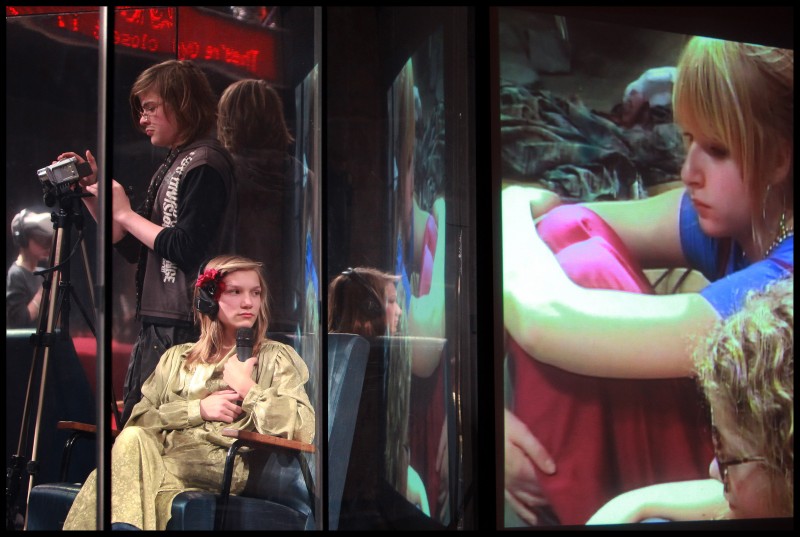
Microphones and Video in "Before Your Very Eyes," Photo: Phile Deprez
7/10 saw actors using hand-held microphones
6/10 used either film material or projections
3/10 set designs featured running water on stage
But who did what?
Overview:
Techniques:
Productions:
And the winner is…
Faust I+II, Nicolas Stemann’s re-interpretation of Goethe’s two-part tragedy, featured over 80% of the techniques listed here (followed closely by Theater Bonn’s Ein Volksfeind). Now, one could call this a coincidence, but perhaps I have accidentally stumbled upon the judging criteria for the 10,000 euro 3sat prize, awarded during the Berlin Theatertreffen „to one or more artists from participating ensembles for pioneering, artistically innovative achievement,“ as yesterday jury members Yvonne Büdenhölzer (Theatertreffen Director), Vasco Boenisch (Theatertreffen jury member), and Wolfgang Horn (ZDFkultur/3sat journalist) decided to honour none other than Nicolas Stemann with this award.
It could be argued that any truly „pioneering, artistically innovative achievement“ would display none of the rampantly popular trends listed above, instead forging ahead with its own path regardless of the reigning stage fashions. Platonov, then? Amazingly, Alvis Hermanis‘ production of Chekhov’s first serious drama was the only production that retained the „fourth wall“ between the audience and the stage – looks like your best chance of being truly unconventional at this year’s Theatertreffen was to be conventional.
